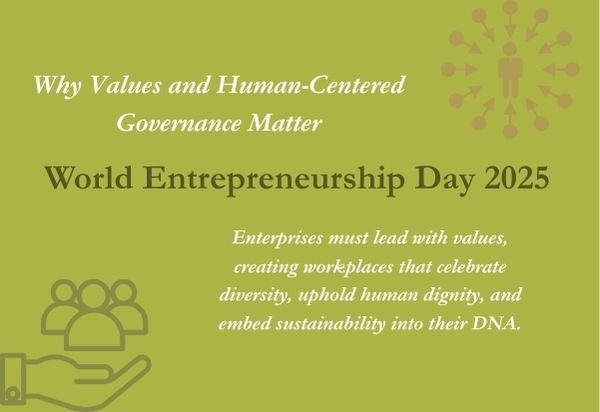In a significant step toward deepening economic ties, Russia and the United Arab Emirates (UAE) are finalizing a free trade zone agreement between the Eurasian Economic Union (EAEU) and the UAE, with a target signing date by the end of 2025. Announced by Russian Deputy Prime Minister Alexei Overchuk on April 28, 2025, the deal promises to enhance non-oil trade, which has already surged to $11 billion in 2023 and grown 26% in the first nine months of 2024. For small and medium enterprises (SMEs) in both regions, this agreement could unlock unprecedented opportunities, though challenges remain.
A Strategic Partnership Amid Global Shifts
The EAEU, comprising Russia, Armenia, Belarus, Kazakhstan, and Kyrgyzstan, represents a market of 200 million consumers and a $5 trillion GDP. The UAE, a global trade hub, has been aggressively expanding its trade network through its Comprehensive Economic Partnership Agreement (CEPA) program, signing 26 deals by March 2025. This agreement, in negotiation since 2023, aligns with the UAE’s Vision 2030 to diversify its economy and the EAEU’s push to counter Western sanctions and integrate into global markets.
The timing is critical. With U.S. tariffs disrupting global trade and Russia facing economic isolation, the UAE offers a vital conduit for EAEU goods. Conversely, the EAEU’s vast market provides UAE businesses with new growth avenues. Non-oil trade, including sectors like agriculture, technology, and consumer goods, is at the heart of this partnership, setting the stage for SMEs to thrive.
UAE: A Gateway to New Markets
For the UAE, the agreement opens access to the EAEU’s sizable consumer base, reducing tariffs and trade barriers. This is particularly impactful for SMEs in Dubai’s free zones, which specialize in logistics, fintech, and consumer goods. Lower export costs could enable small food and beverage firms to penetrate markets like Kazakhstan, where demand for halal products is growing. The UAE’s strategic position also strengthens its role as a re-export hub, allowing SMEs to facilitate EAEU goods’ entry into Asia and Africa.
Investment opportunities abound as well. The UAE’s $150 billion foreign investment strategy could attract EAEU firms to collaborate with local SMEs, fostering joint ventures in manufacturing or e-commerce. For instance, UAE fintech startups could partner with EAEU tech firms to develop payment solutions tailored to both regions.
EAEU: Bypassing Barriers
For the EAEU, the UAE represents a sanctions-proof trade partner. Russian SMEs in agriculture, such as grain or dairy producers, can export to the UAE’s affluent market and its re-export networks, mitigating the impact of Western restrictions. Similarly, Armenian IT startups or Kyrgyz honey producers could find niche markets in the UAE’s health and tech sectors. The agreement also facilitates technology transfers, enabling EAEU SMEs to adopt UAE’s advanced logistics or AI solutions.
The EAEU’s SMEs stand to benefit from the UAE’s global trade networks, gaining access to markets in the Gulf, Asia, and beyond. This is crucial for smaller EAEU members like Kyrgyzstan, whose renewable energy startups could attract UAE investment.
SMEs in the Spotlight
SMEs, often the backbone of both economies, are poised to gain significantly from this agreement, but their success depends on targeted support.
UAE SMEs: Opportunities and Challenges
UAE SMEs, particularly in Dubai and Abu Dhabi, can leverage reduced tariffs to export products like packaged foods, cosmetics, or tech solutions to EAEU countries. For example, a Dubai-based halal food startup could tap into Kazakhstan’s Muslim-majority market, while e-commerce platforms like Noon could partner with EAEU retailers to expand online sales. The UAE’s free zone incentives, such as tax exemptions, further enhance SMEs’ competitiveness.
However, challenges include logistical complexities in reaching landlocked EAEU regions and navigating varying regulatory standards across member states. Language barriers and cultural differences may also hinder market entry, requiring SMEs to invest in local partnerships or market research.
EAEU SMEs: A Global Leap
For EAEU SMEs, the UAE offers a gateway to global markets. Russian textile firms or Belarusian food processors can target the UAE’s luxury retail sector, while Armenian tech startups could collaborate with UAE firms on software development. The agreement’s focus on non-oil trade aligns with the EAEU’s diversification goals, enabling SMEs to move beyond traditional energy exports.
Yet, EAEU SMEs face significant hurdles. Sanctions-related banking restrictions complicate payments with UAE partners, and limited global market experience may put them at a disadvantage against the UAE’s seasoned traders. Governments must provide financing, training, and digital tools to help these SMEs compete.
Critical Considerations
While the agreement holds immense potential, its success hinges on implementation. The EAEU’s bureaucratic inefficiencies and uneven economic development could delay benefits for SMEs, particularly in smaller member states. Russia’s dominant role in the EAEU may skew advantages toward its firms, potentially sidelining others. For the UAE, partnering with a sanctioned Russia carries geopolitical risks, though its neutral stance and mediation history (e.g., facilitating prisoner swaps) should mitigate tensions with Western allies.
SMEs, often resource-constrained, will need robust support to capitalize on this deal. The UAE’s free zone authorities and the EAEU’s Eurasian Economic Commission should offer tailored programs, including export financing, market intelligence, and digital trade platforms. Without these, larger corporations may dominate the benefits, limiting the agreement’s inclusivity.
Looking Ahead
The UAE-EAEU free trade zone agreement is a bold step toward economic resilience and diversification. For SMEs, it offers a chance to access new markets, forge partnerships, and drive innovation. By reducing trade barriers and fostering collaboration, the deal could reshape bilateral trade, benefiting small businesses in sectors from agriculture to technology. However, overcoming logistical, regulatory, and geopolitical challenges will be key to ensuring equitable gains.
As the year-end signing approaches, stakeholders should monitor updates from the UAE’s Ministry of Economy and the EAEU’s Eurasian Economic Commission. For SMEs in both regions, this agreement could be a game-changer, provided they receive the support needed to seize this historic opportunity.
Sources:
- TASS (https://tass.com/economy/1951119)
- General knowledge of UAE’s CEPA program and EAEU trade strategies as of April 29, 2025
Author Profile
Latest entries
 Business18 October 2025Start Your Drone Business: Aquiline Drones Franchise Program for Veterans
Business18 October 2025Start Your Drone Business: Aquiline Drones Franchise Program for Veterans Doing business3 June 2025India’s Q-Commerce Growth Underscores Market-Driven Innovation: Siddharth Shankar
Doing business3 June 2025India’s Q-Commerce Growth Underscores Market-Driven Innovation: Siddharth Shankar Business15 May 2025World MSME Day: A Global Commemoration of Entrepreneurial Vitality
Business15 May 2025World MSME Day: A Global Commemoration of Entrepreneurial VitalityBusiness29 April 2025Russia and UAE Near Historic Free Trade Zone Agreement: A Boost for SMEs











